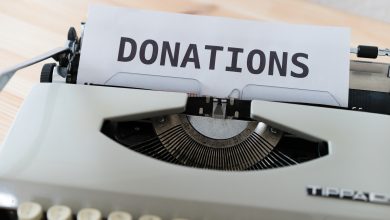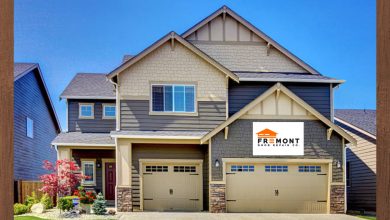Which Artificial Grass To Choose In Dubai

Introduction
Artificial grass is quite versatile and may be utilized in many different contexts. However, some artificial grass varieties could be more appropriate for particular garden designs, purposes, or when you want to achieve a specific aesthetic. To put this into perspective, the features to consider when choosing fake grass for various locations are provided in this buying guide.
Synthetic Lawns for Homes
One of the most significant benefits for individuals looking to invest in a synthetic grass lawn is often not having to mow, weed, or water the lawn. It is characteristic of artificial lawns in that it is simple to maintain, but there are some essential considerations before buying. We shall examine some crucial issues and topics in the parts that follow.
How frequently will the lawn be used?
Parents of young, energetic kids will know how quickly a lawn will become muddy and how angry they will be when told they can’t play in the garden. Artificial lawns are needed for households with children, and it makes sense to prioritize durability.
The material from which artificial grass is made is the factor that significantly impacts how long it will last. The surface on which they are sewn and the fibers exhibit this characteristic. Grass fibers are made of a variety of materials, such as nylon polyamide (PA), polypropylene (PP), or polyethylene (PE), and the varied mixtures can have a variety of qualities. They are combining polypropylene with polyethylene results in a fantastic all-purpose composite. It’s important to remember that the amounts of each will differ depending on the product and the intended use.
Less dense, shorter heaps with plenty of coiled monofilaments are frequently chosen for heavily used locations like playgrounds because they are probably more resilient to the stresses of foot activity. However, taller grasses with an equitable distribution of straight and curved monofilaments typically seem more natural, tend to be softer underfoot, and are a better and more preferred alternative for household lawns.
The stitch rate, or how many strands are sewn into the lawn, is another factor to consider because it affects how dense the grass appears. Stitches per meter or stitches per square meter are two ways to express stitch rate. Between 7,000 and 28,000/m2, they might vary significantly. The more significant numbers usually produce denser, longer-lasting lawns.
A trustworthy artificial grass supplier should be able to provide you with a data sheet that details the stitching rate and the materials utilized. Ask questions without hesitation.
How Much Sunlight will the Lawn Get?
Different gardens are more susceptible to light than others. It’s crucial to be aware that certain materials may deteriorate from extended exposure to UV radiation if you receive a lot of direct sunshine. Consult your supplier to prevent this danger and ensure the grass you choose has been UV stabilized, including the fibers and backing material. This indicates that the product is carefully made to deliver years of trouble-free operation, even in the brightest settings.
Be aware that a trustworthy installer or provider will normally advise using silica sand (or something similar) once the grass has been installed. Sand may be brushed over fake grass to keep the pile upright and secure. The backing material is given additional UV protection as a result, though. It is worthwhile to spend for this reason alone.
Pets and Artificial Lawns
Artificial lawns that bear the designation “pet safe” are often lead- and other dangerous substance-free. Artificial turf may occasionally be bit by or chewed by cats, dogs, and other animals, so it’s essential to ensure it’s clean of anything that can spread disease. Although contemporary synthetic grasses are secure, it is crucial to confirm. The technical data should give precise details on the absence of toxins like lead and cadmium in the grass.
Drainage is a crucial topic to take into account. Pets, whether your own or those of nearby homes, may periodically need to go outside to relieve themselves. This is a significant issue for potential purchasers because the liquid is essential to drain quickly and smoothly. This may lessen the likelihood of odors and guarantee that your grass is kept tidy. However, a hosepipe may be used in dry situations to maintain a lovely artificial lawn. In most cases, a brief time of rain is sufficient.
To determine how well your grass drains, you must check for a water permeability number, often stated as “liters per minute per square meter” (liter/min/m2). High-quality grasses often drain at 60 liters per minute per square meter.
Artificial Grass for Play Areas
In this situation, playgrounds might include public play places, nurseries, and school grounds. As opposed to a conventional residence, you may anticipate heavier use here, and the following are the most crucial considerations:
- Durability
- Safety
- Cost
The suitable material must be chosen, together with the appropriate installation and maintenance, to be durable.
As longer fibers will be flatter and peel off more quickly, shorter heaps may be suitable for frequently utilized areas. Even the most outstanding artificial grass will recover if built properly, but if a playground is heavily used on some days, the shorter, more delicate grass, A thick pile will likely keep its look better.
Shorter pile items have the drawback of not feeling like they do. However, shock-absorbing cushions are usually set beneath in case safety or feel are crucial design considerations. The danger of injuries from falls can be decreased, and the artificial grass will last longer if there is a well-designed shock-absorbing cushion below it. You may get advice from a trustworthy source on how to utilize the shock pad system and what size and grade to choose to fulfill the different fall-related essential thresholds (e.g., for mounting on climbing frames or.)
Artificial Turf for Sports Venues
When it comes time to pick artificial grass, many criteria apply to sports surfaces similar to playing fields. Durability is an essential need, perhaps significantly more critical than features like color or design.
The height of the pile should be taken into account as well. For instance, putting greens, tennis courts, and hockey fields would benefit more from short, tightly curled, exceedingly homogeneous grass. However, a longer length could be preferable for places where football or rugby are played.
Turfs with the shortest pile height (perhaps 10mm-14mm), the most excellent stitching rate, and a high proportion of curly filaments are made available for the roughest playing surfaces. They are frequently seen in playgrounds, open-air sports venues, and synthetic putting greens.
A quality underlay may affect the many properties of the playing surface, such as the height at which a ball can bounce, in addition to protecting the pitch and players.
Fire Safety
Modern artificial lawns are typically entirely secure and do not provide a significant fire risk. Of course, protecting the turf from extremely high temperatures or open flames is essential. Still, in most cases, really high temperatures cause synthetic grass fibers to melt and fade rather than burn. However, exposure to scorching temperatures must be avoided since this can need costly repairs.
There are times when strict fire safety regulations are necessary, such as artificial grass used for interior settings, high-rise balconies, or rooftop terraces. Specialized grass products may be used in projects that call for a qualified, approved, and tested fire system. According to the technical summary paper, the current EU standard (EN 13501-01) for floor coverings measures smoke output and flame propagation. When choosing a grass to utilize in a fire-sensitive location, seek the Cfl or Bfl grades since these indicate that the grass is flame-resistant and generates “little smoke.”
After installation, adding silica sand to the artificial turf will give it an extra fire-retardant advantage. Even though it won’t be enough on its own to produce an officially fire-retardant product, it will undoubtedly offer more resistance. Sand is inherently insulating, won’t burn, and has a protective effect on any underlying materials underneath it. This is only one of the many good reasons to buy silica sand.
Pool Surrounds
Artificial turf doesn’t require much water, but it is important to consider the chemicals it will be exposed to. All natural lawns suffer damage from frequent exposure to chlorinated water, but particular artificial lawns may fade or degrade. Choose a product resistant to chemicals if you are concerned about chemical exposure.
The possibility of slippage must also be kept in mind. Artificial grass is a good option for backing your artificial turf. It can be more secure than tiles because it is waterproof to water.
The item with a higher pile may also be more comfortable to sit or lie on.
Other Uses
Artificial grass is being used in many areas, including displays, balconies, rooftops and retail locations. We can assist you if you’re having difficulty with a particular use. Call us right now for free advice.
Artificial grass can be used in many applications, including displays for exhibits, balconies, rooftops, retail areas, and many other locations. We can assist you if you have difficulty with a particular use. Can artificial grass be used on rooftops? Typically synthetic turf is used on rooftop areas to prevent wind damage.




